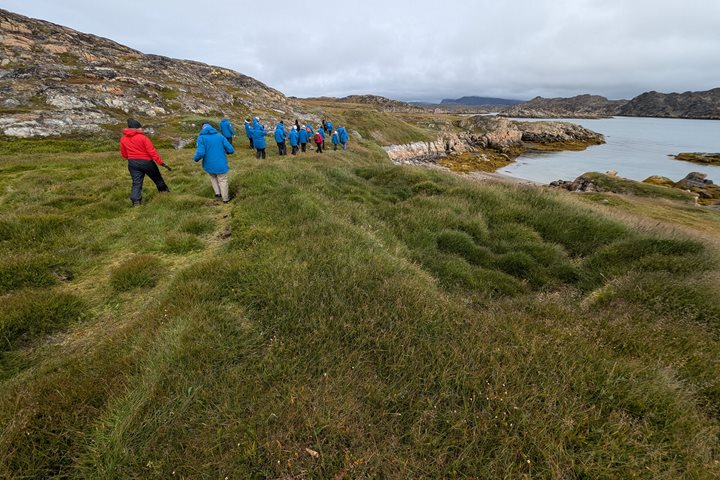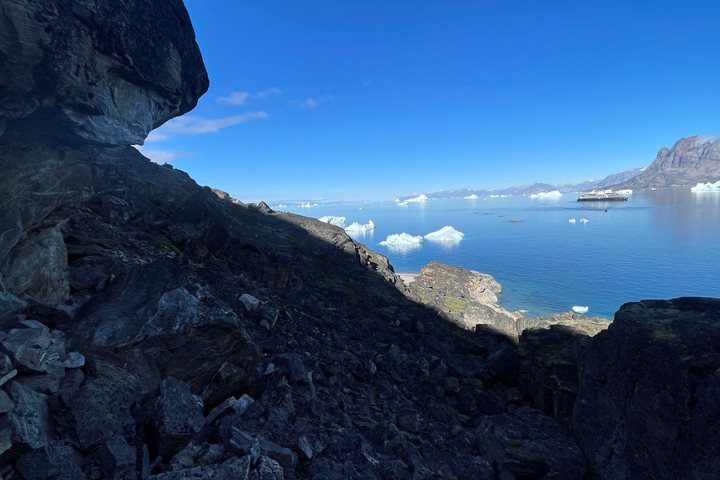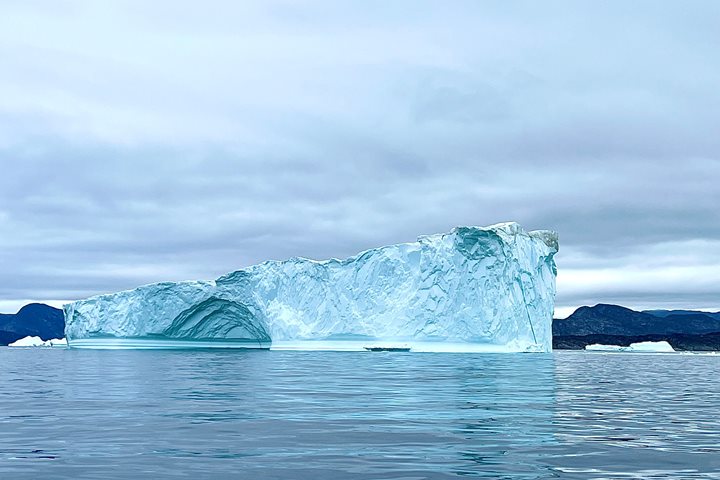We woke to a placid but fog-enshrouded morning on our way into Isafjordur. Overnight, the seas were wonderfully calm, and any jetlag from our travels was starting to fade. After a quick breakfast, a few of us headed out on a bike ride on the old road to Bolungarvik. Others made a leisurely disembarkation for a hike out to the waterfall in Valagil. The rest joined a coach ride to enjoy a scenic tour of the church and flower gardens of the village.
The hike was a dynamic stroll up a wildflower filled valley across several small streams until we reached the waterfall. It was a nice leg stretch, and the fog began to lift just as we were leaving. We could see the mountaintops and glaciers behind us.
All the groups returned to the ship for lunch, and we set sail for the island of Vigur. En route, the bridge spotted some whale blows a mile or so away. We redirected our course and slowed our navigation. Soon we were surrounded by eight to ten humpback whales. Several were feeding in a group of six, and two others fed as a pair. At random intervals, other individuals came into the fray. The ocean was full of a smack of moon jellyfish. What an afternoon! We spent almost an hour observing the whales, taking photographs, and enjoying this special observation. We departed around 14:30, and our National Geographic photographer Sisse gave a tutorial to get us inspired to take meaningful photographs, better described as “think then shoot.”
Later in the afternoon, we reached Vigur Island, known for its eider ducks as well as strong Atlantic puffin and black guillemot colonies. We set off with local guides and our own naturalists on a short, one-mile walk across Iceland to learn how to harvest the down and about the unique, privately-owned island. We had been warned about the nesting Arctic terns that live on the island. Local guides gave us good advice as well as “distraction sticks” to keep us safe as we crossed the breeding meadow. Although it is believed to be a blessing and good luck to leave with droppings decorating your clothing, we escaped unscathed.
After enjoying sunny views of Isajaroardjup, we finished up at the main house where a beautiful spread of traditional rhubarb “wedding cake” was served with tea and coffee. We had the chance to get another view of the puffins before we boarded the Zodiacs and returned to ship. Once on board, cocktail hour was quickly underway followed by our first recap. Mada spoke more about the eider down industry, Shell explained some tern biology, and Patrick did some research with Happy Whale to determine the identities of a few of the individual humpbacks we saw this afternoon. Funny enough, the three that we identified via their unique “thumbprint” flukes had only been seen in Iceland so far. Their winter breeding ground is yet to be known. Dinner was enjoyed, and we headed to bed to contemplate early morning hiking options in Dynjandi and to look forward to exploring Iceland for one final day before crossing over to new adventures in Greenland.









